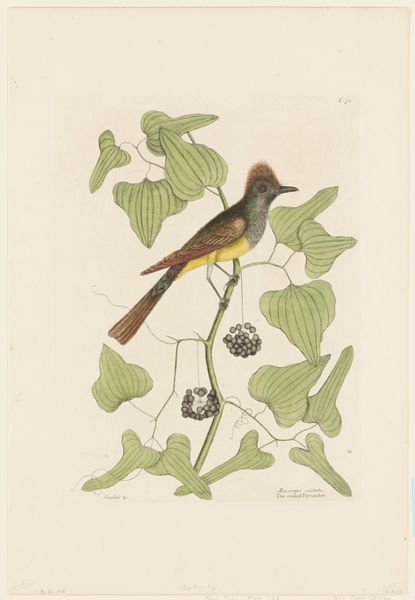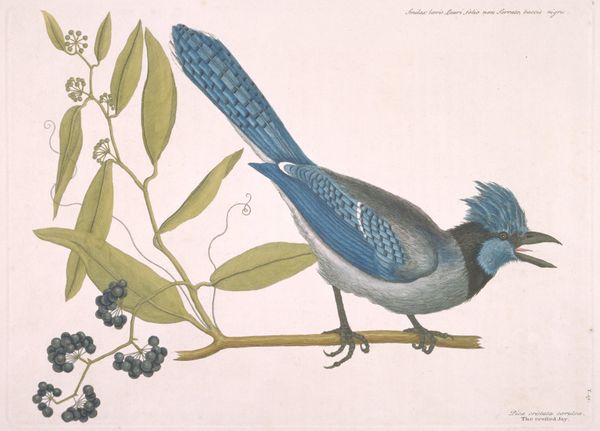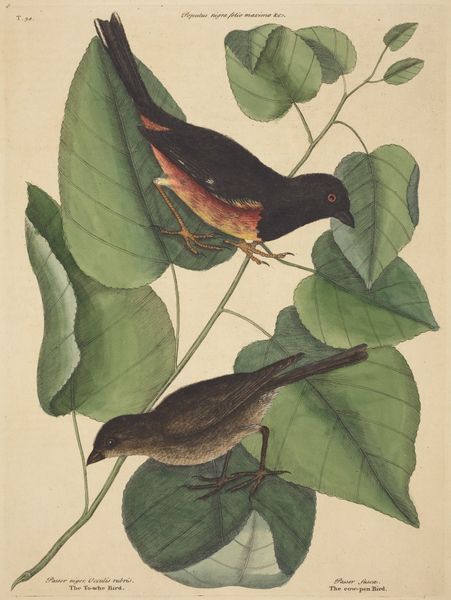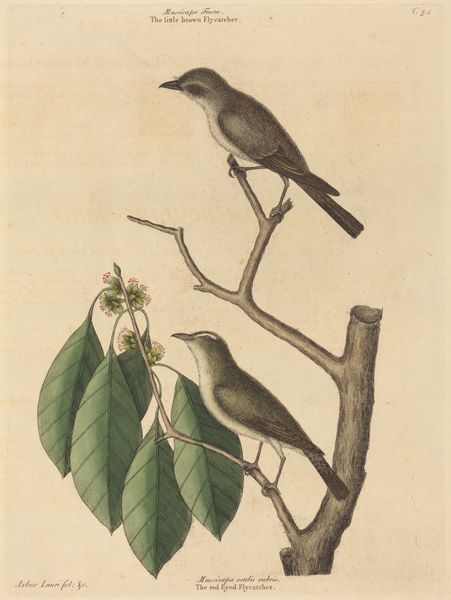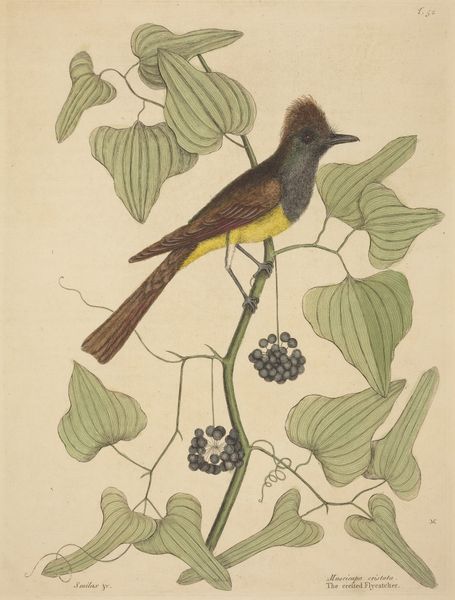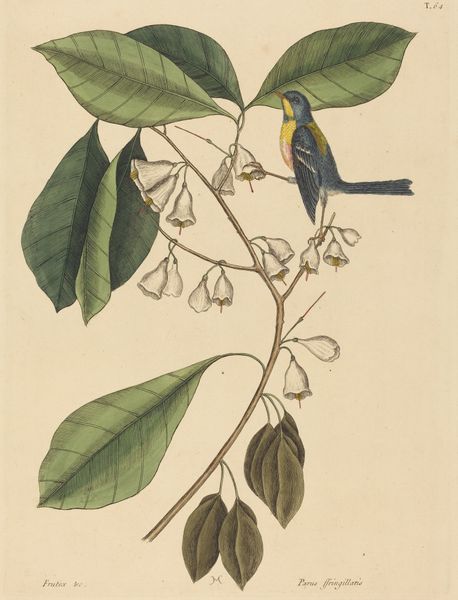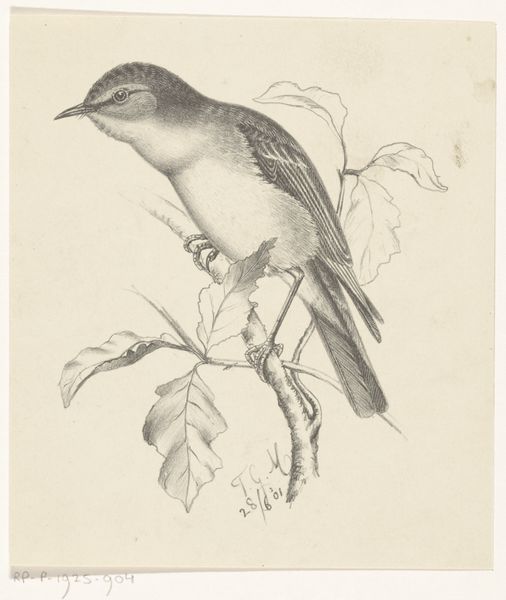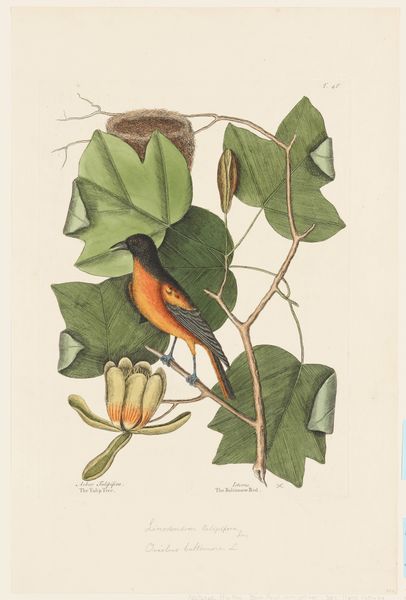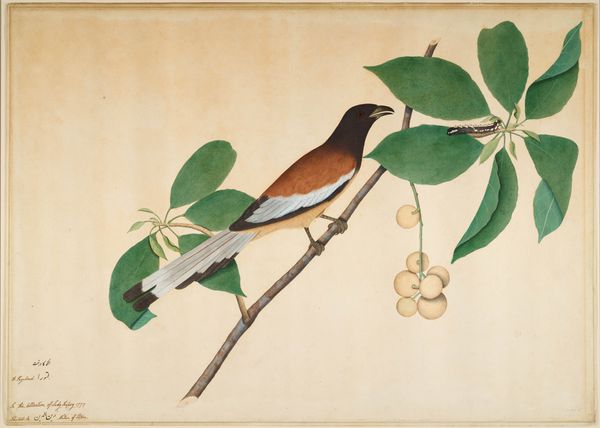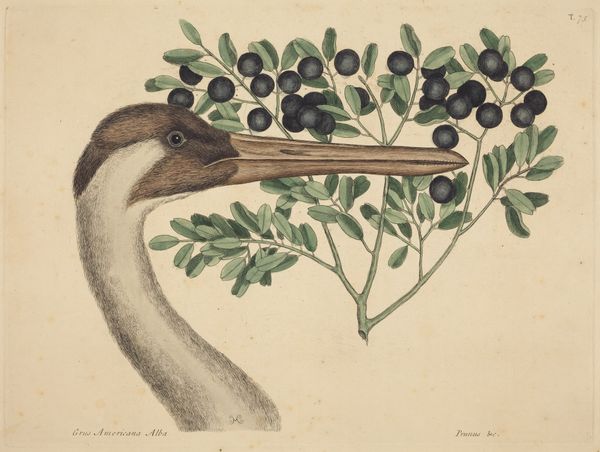
drawing, hand-colored-etching, print, watercolor, engraving
#
drawing
#
hand-colored-etching
#
neoclassicism
# print
#
landscape
#
botanical illustration
#
watercolor
#
botanical drawing
#
watercolour illustration
#
engraving
#
botanical art
#
watercolor
Dimensions: 10 1/4 x 13 7/8 in. (26.04 x 35.31 cm) (sheet)
Copyright: Public Domain
Curator: Here we have Mark Catesby's "The Mock-Bird," created between 1731 and 1743. This hand-colored etching combines engraving, drawing, and watercolor to capture a scene brimming with natural beauty. It's currently part of the collection at the Minneapolis Institute of Art. Editor: It’s serene, isn’t it? The gentle pastel hues immediately strike me. There's a quiet symmetry in the composition, almost like a heraldic emblem—nature formalized. Curator: Catesby's work predates Audubon and holds its own particular importance. His meticulous depictions were not just artistic, but scientific, aiming to document the flora and fauna of the New World for a European audience. The Mock-Bird itself, a creature known for its imitative songs, could symbolize the colonial encounter—the adaptation and assimilation of new sounds and cultures. Editor: Yes, and even within what appears to be a straightforward representation, there's a deliberate artificiality. The positioning of the bird and flowers seems staged. It's not a photograph of nature, but an orchestrated performance using natural motifs. Note, too, the thin lines in the engraving lend to the sense of a diagram more than a landscape. Curator: Precisely. Think of the Enlightenment's desire to classify and understand the world. Catesby, in that spirit, is offering us a specimen, carefully observed and rendered. Even the surrounding flowers and berries contribute. The pink blooms offer beauty, yes, but also convey important details of the bird’s habitat and sustenance. Editor: And the subdued palette reinforces that objective distance. Even the light, it is not impressionistic, capturing a passing moment, but seems uniformly applied across the surfaces, underscoring their textures equally, with very little shadow play. Curator: Absolutely, a testament to Catesby’s role as a recorder rather than simply a painter. He serves as a cultural emissary, translating the wild, unknown landscapes of America into understandable visual information. It provided not only visual knowledge, but stories to Europeans to conjure. Editor: It makes me consider what we value most from scientific illustration today: factual exactitude, and an even starker visual economy. Catesby’s art contains elements of storytelling that add depth, lost perhaps in clinical photographs in our textbooks. Curator: A powerful reminder of the layered meanings art holds—a nexus point where observation, science, and culture all intertwine to inform perception. Editor: Agreed, a lens reflecting nature back to us and highlighting our continuous search for harmony and order.
Comments
No comments
Be the first to comment and join the conversation on the ultimate creative platform.

